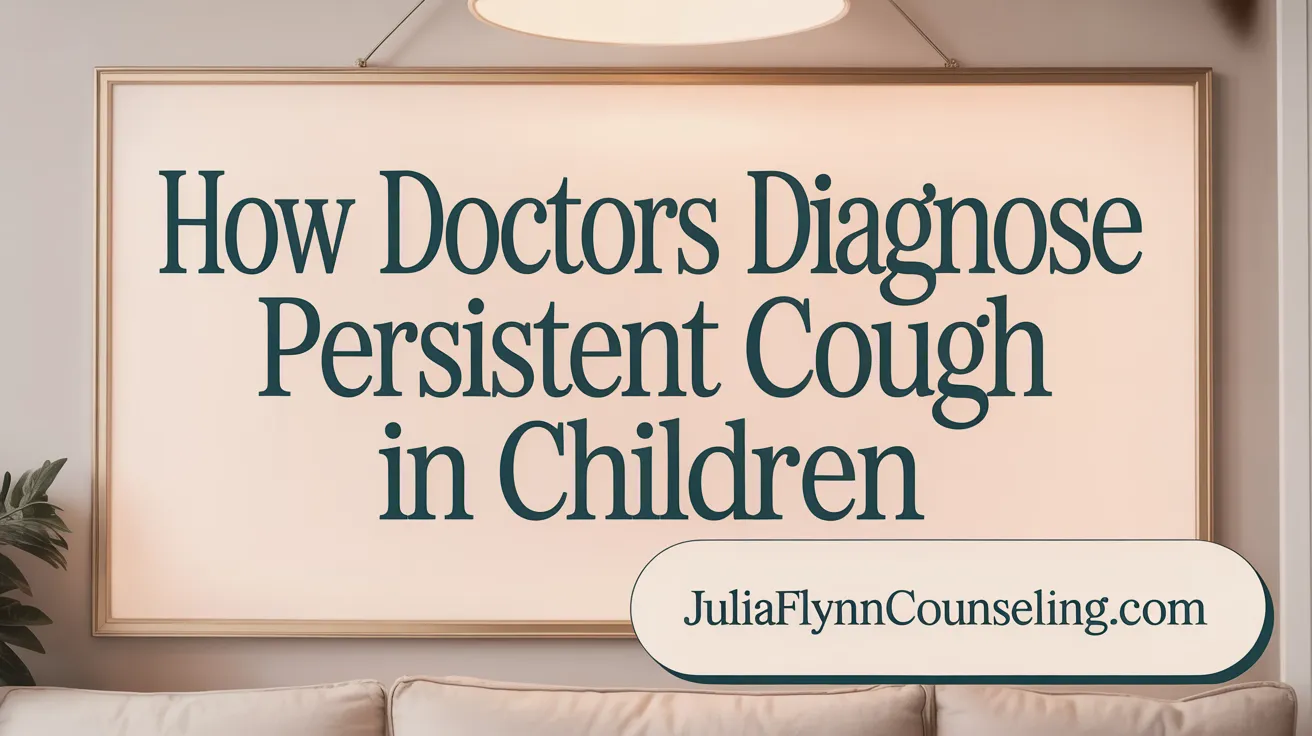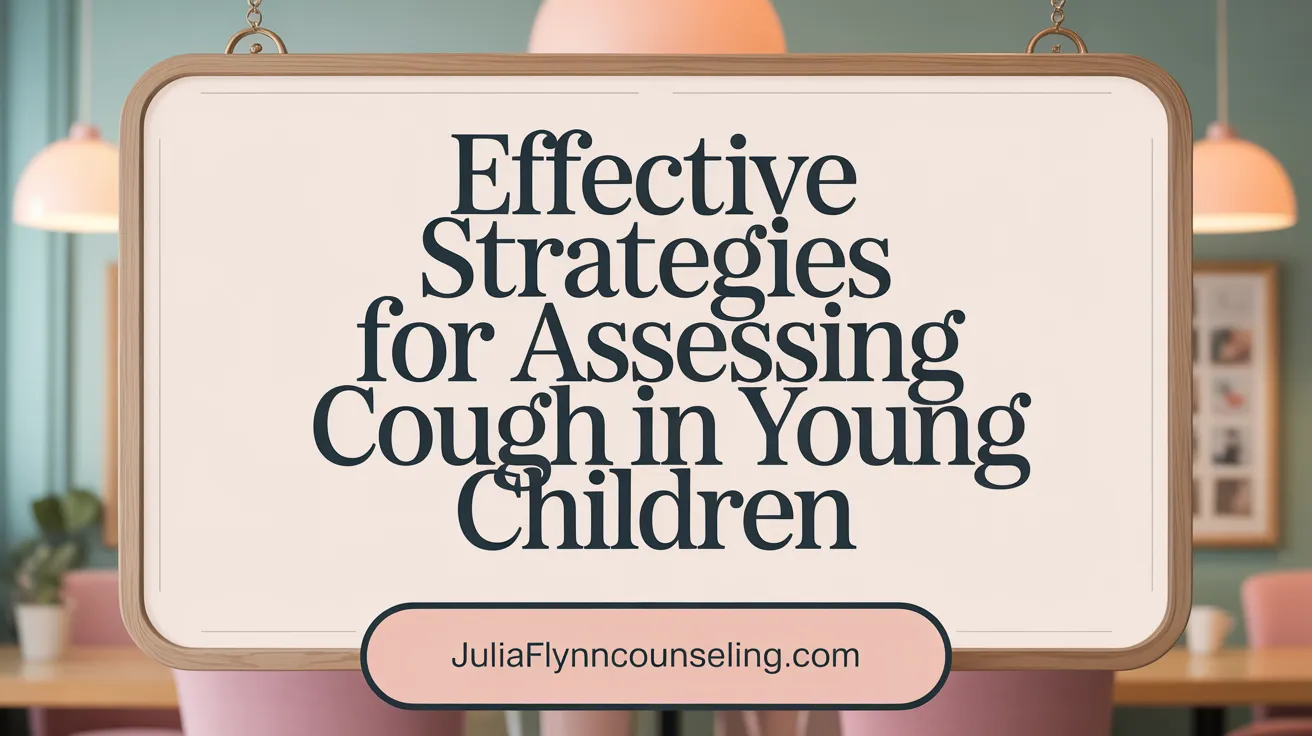Understanding Persistent Cough in Preschoolers
Persistent cough in preschool-aged children is a common but often complex clinical challenge faced by parents and healthcare professionals alike. While most coughs in this age group resolve within a couple of weeks, those lasting longer may signal underlying conditions requiring careful evaluation and targeted treatment. This article explores the broad scope of causes, diagnostic approaches, management strategies, and red flags associated with chronic coughs in young children, empowering caregivers and clinicians with up-to-date knowledge and practical guidance.
Common Causes of Persistent Cough in Preschoolers

What are the common causes of persistent cough in preschoolers?
Persistent cough in preschool-aged children, defined as lasting more than four weeks, often indicates an underlying health issue that requires evaluation. In this age group, various conditions can be responsible.
One of the most frequent infectious causes is protracted bacterial bronchitis. This condition involves bacteria such as Haemophilus influenzae and Streptococcus pneumoniae colonizing the airways, leading to increased mucus production and a phlegmy, productive cough.
Asthma, especially cough variant asthma, is another prevalent cause. In children, asthma may present primarily with a dry, chronic cough without typical wheezing, and may respond well to bronchodilator therapy.
Allergic conditions play a significant role as well. Allergic rhinitis and sinusitis can produce postnasal drip, which can trigger a cough. This is particularly common in children with allergies or sensitivities.
Beyond infections and allergies, gastroesophageal reflux disease (GERD) can cause chronic cough, often worsened after eating or during daytime. However, GERD is a less common cause compared to the others.
Other causes include foreign body aspiration, which is suspected if the cough begins suddenly, especially after choking or during play.
Congenital anomalies of the airway or digestive tract, such as tracheoesophageal fistula, are less common but serious causes.
Chronic lung diseases, like cystic fibrosis, are rare but important diagnoses, especially when cough is associated with other signs like failure to thrive or recurrent respiratory infections.
Some coughs are not attributable to ongoing pathology but are habitual or psychogenic, often characterized by being absent during sleep, loud, or distractible.
Overall, while many causes are benign, persistent cough warrants thorough investigation to identify and treat the underlying cause effectively.
Diagnostic Evaluation Approaches for Persistent Cough

How is persistent cough in young children diagnosed?
Diagnosing a persistent cough in young children requires a comprehensive approach that combines detailed clinical history with careful physical examination. Healthcare providers start by asking about when the cough began, how long it lasts, whether it is dry or wet, and if it is associated with other symptoms such as wheezing, fever, or feeding difficulties. The pattern and timing of cough episodes, along with environmental exposures like smoking or known allergies, are also important.
Physical examination involves checking for signs of respiratory distress, growth failure, or abnormal lung sounds such as wheezing or crackles. Special attention is given to signs that may indicate more serious conditions, such as cyanosis or tachypnea.
Further evaluation often includes chest radiographs to visualize lung structures and identify conditions like inhaled foreign bodies, pneumonia, or congenital anomalies. Pulmonary function tests, such as spirometry, can confirm obstructive airway disease like asthma. Sputum cultures help detect bacterial infections such as protracted bacterial bronchitis, while allergy testing can identify allergic rhinitis or sinusitis as contributing factors.
In some cases, bronchoscopy is warranted to directly examine the airways, especially if foreign body aspiration or structural abnormalities are suspected.
A systematic approach emphasizes ruling out red flags—such as cough that started during feeding, persistent moist cough, or associated failure to thrive—which indicate the need for urgent or specialized investigation.
This thorough diagnostic process aims to identify underlying causes like bacterial bronchitis, asthma, foreign body, congenital malformations, or other conditions. Effective diagnosis guides targeted treatment and avoids unnecessary medication or interventions.
Ultimately, the goal is to determine the precise etiology so that management can be specific and effective, improving the child's quality of life and reducing unnecessary testing.
Assessment Techniques and Clinical Evaluation

What assessment and evaluation approaches are recommended for persistent cough in preschoolers?
Assessing persistent cough in young children requires a systematic and thorough approach. The process begins with a comprehensive clinical history, where clinicians focus on pinpointing the cough's characteristics—such as whether it is dry or wet, its duration, frequency, and any triggers or patterns. It is also crucial to inquire about associated symptoms like wheezing, chest tightness, nasal congestion, fever, or fatigue, as well as family history of asthma, allergies, or respiratory diseases.
Environmental factors are vital. Details about exposure to cigarette smoke, pets, recent infections, or recent choking episodes can provide clues to potential causes like postnasal drip, asthma, or foreign body aspiration.
Physical examination should include careful auscultation of the lungs for abnormal breath sounds—such as wheezes or crackles—and inspection for signs of respiratory distress or anomalies, including nasal congestion or abnormal chest wall movement.
Further investigations are tailored to initial findings. A plain chest radiograph can identify infections, structural abnormalities, or foreign bodies.
Lung function tests, such as spirometry or impulse oscillometry, may be useful in children old enough to cooperate, typically over five years of age. For younger children, bronchial responsiveness testing and observation of cough response to bronchodilators can be insightful.
Additional testing could include sweat chloride testing if cystic fibrosis is suspected, sputum analysis, or bronchoscopic procedures like bronchoscopy to evaluate for foreign bodies, structural anomalies, or other abnormalities.
Referral to a pediatric pulmonologist is advised when initial assessments do not yield a clear diagnosis, or if conditions such as bronchiectasis, persistent infections, or airway malformations are suspected. Early specialist consultation ensures appropriate management is initiated.
Ultimately, a combination of detailed history, careful physical examination, and a strategic selection of investigations facilitates accurate diagnosis and tailored treatment for children with persistent cough.
Differentiating Etiologies of Cough in Young Children

How can different causes of cough in young children be differentiated?
Understanding the various causes of cough in children relies on carefully analyzing specific cough characteristics and associated features. A dry cough often indicates conditions like cough-variant asthma or habit cough, whereas a wet, productive cough suggests bacterial infections such as protracted bacterial bronchitis.
The duration of cough is a significant indicator:
- Acute cough (less than 3 weeks) is usually viral or bacterial respiratory infection.
- Prolonged cough (4 to 8 weeks) can signal postinfectious cough, cough-variant asthma, or allergies.
- Chronic cough (more than 8 weeks) raises suspicion for asthma, sinusitis, foreign body, or other underlying illnesses.
Child's age influences common diagnoses:
- Children under 3 years often experience croup, characterized by a barking cough.
- Older children commonly present with asthma, sinusitis, or persistent infections.
Associated symptoms provide further clues:
- Fever and malaise point towards infection.
- Wheezing suggests reactive airway disease like asthma.
- A history of choking may indicate foreign body aspiration.
- Recurrent infections or failure to thrive warrants comprehensive assessment.
Diagnostic tests are essential in ambiguous cases:
- Chest X-ray helps detect pneumonia, foreign bodies, or anatomical anomalies.
- Lung function tests (spirometry, bronchodilator response) confirm obstructive airway conditions.
- Response to empirical therapies (e.g., steroids for suspected asthma) can guide diagnosis.
Clinical clues specific to conditions include:
- Nocturnal cough and response to bronchodilators suggest asthma.
- Postnasal drip and rhinorrhea are typical in sinusitis.
- Cough following feeding or during sleep may indicate reflux or aspiration.
In summary, differentiating causes involves combining detailed history, physical exam findings, and targeted investigations, enabling precise diagnosis and management.
Clinical Management and Treatment Guidelines
 When addressing persistent cough in preschool-aged children, a careful and systematic approach is essential. The initial step involves taking a comprehensive history and performing a physical exam to identify any signs that may indicate serious underlying issues, such as failure to thrive, recurrent pneumonia, or a wet cough. These red flags help determine whether urgent investigations or specialist referral are needed.
When addressing persistent cough in preschool-aged children, a careful and systematic approach is essential. The initial step involves taking a comprehensive history and performing a physical exam to identify any signs that may indicate serious underlying issues, such as failure to thrive, recurrent pneumonia, or a wet cough. These red flags help determine whether urgent investigations or specialist referral are needed.
Most coughs in young children are self-limiting, but if the cough persists longer than four weeks, further diagnostic tests are often warranted. These tests may include chest X-rays, allergy assessments, lung function testing such as spirometry or impulse oscillometry, and possibly bronchoscopy if initial evaluations do not reveal a cause.
Treatment strategies depend on the identified cause. Antibiotics are reserved for bacterial infections like protracted bacterial bronchitis, which is common, whereas inhaled corticosteroids may benefit children with cough variant asthma or reactive airway disease. Empiric use of medications without clear evidence or diagnosis should be avoided to prevent unnecessary exposure to potential side effects.
Supportive care forms a cornerstone of management. This includes ensuring adequate hydration, using humidifiers, and reassuring parents about the natural course of viral illnesses often responsible for cough. Environmental modifications, such as minimizing passive smoke exposure and controlling allergens, can significantly reduce cough severity and duration.
Parental education is crucial. Explaining the importance of avoiding over-the-counter cough remedies for young children, emphasizing the self-limiting nature of most coughs, and instructing on signs that warrant medical attention can decrease anxiety and promote early intervention.
Most importantly, employing a stepwise, guideline-driven approach allows clinicians to identify treatable causes efficiently, avoid unnecessary treatments, and improve health outcomes in children with persistent cough.
Recognizing When to Seek Medical Help and Raising Awareness
What symptoms should parents recognize that indicate the need to seek medical help for a persistent cough in their preschooler?
Parents should be alert to certain signs that require prompt medical attention when their preschooler has a cough lasting more than three to four weeks. Key warning signs include difficulty breathing, wheezing, a fever higher than 100.4°F (38°C) that persists for more than three days, bluish lips or face, chest pain, or any signs of respiratory distress such as stridor or retractions. Immediate care is needed if the child shows severe symptoms like trouble swallowing, excessive drooling, choking, or fainting. Additionally, if the cough is accompanied by fatigue, dehydration, vomiting, or if the child has underlying conditions like asthma, a healthcare provider must evaluate them quickly. In cases of sudden worsening or uncertainty about symptoms, parents should contact their healthcare provider or seek emergency care to ensure safety.
How can healthcare professionals and parents be better informed about persistent cough in preschoolers?
Enhancing awareness involves targeted education for both parents and healthcare providers. Parents benefit from clear informational materials, training sessions, and accessible resources that explain common causes of cough, signs of serious illness, and when to seek intervention. Teaching parents to distinguish normal viral coughs from those indicating conditions like asthma, pertussis, or pneumonia can support better decision-making.
Healthcare professionals need ongoing training to identify symptoms that necessitate urgent evaluation, such as coughs lasting longer than three weeks, severe breathing difficulty, or signs of dehydration. Public health campaigns can further reinforce the importance of timely medical advice, discouraging the overuse of over-the-counter remedies unsuitable for young children. Collaborations with reputable pediatric organizations like Children’s Mercy can ensure consistent, reliable messaging—helping to promote earlier diagnosis and appropriate management of persistent coughs in preschoolers.
Key Takeaways for Evaluating Persistent Cough in Preschoolers
Persistent cough in preschool-aged children necessitates a systematic and thoughtful approach to evaluation and management. Recognizing the diverse array of potential causes—from common viral infections and asthma to more serious conditions like protracted bacterial bronchitis or foreign body aspiration—is vital. Comprehensive history-taking, focused physical examination, and prudent use of diagnostic tools guide clinicians towards accurate diagnosis and appropriate treatment. Equally important is informing parents about warning signs and when to seek medical care, thereby facilitating timely interventions and improved health outcomes. By adopting evidence-based guidelines and fostering education among caregivers and healthcare providers, the challenges of persistent cough in young children can be effectively addressed, ensuring better quality of life for affected children and their families.
References
- EVALUATION OF PERSISTENT COUGH IN CHILDREN
- Diagnosing Chronic Cough
- Approach to chronic cough in children - UpToDate
- Assessing chronic cough in children
- Chronic Cough in Kids
- Evaluation of persistent cough in children
- Cough in Children - Pediatrics
- Coughing: How serious is it and when should I worry?
- Evaluation of the Patient with Chronic Cough
- Common Children's Coughs Explained
